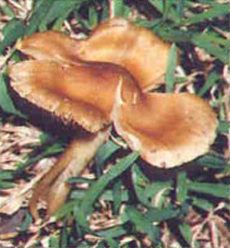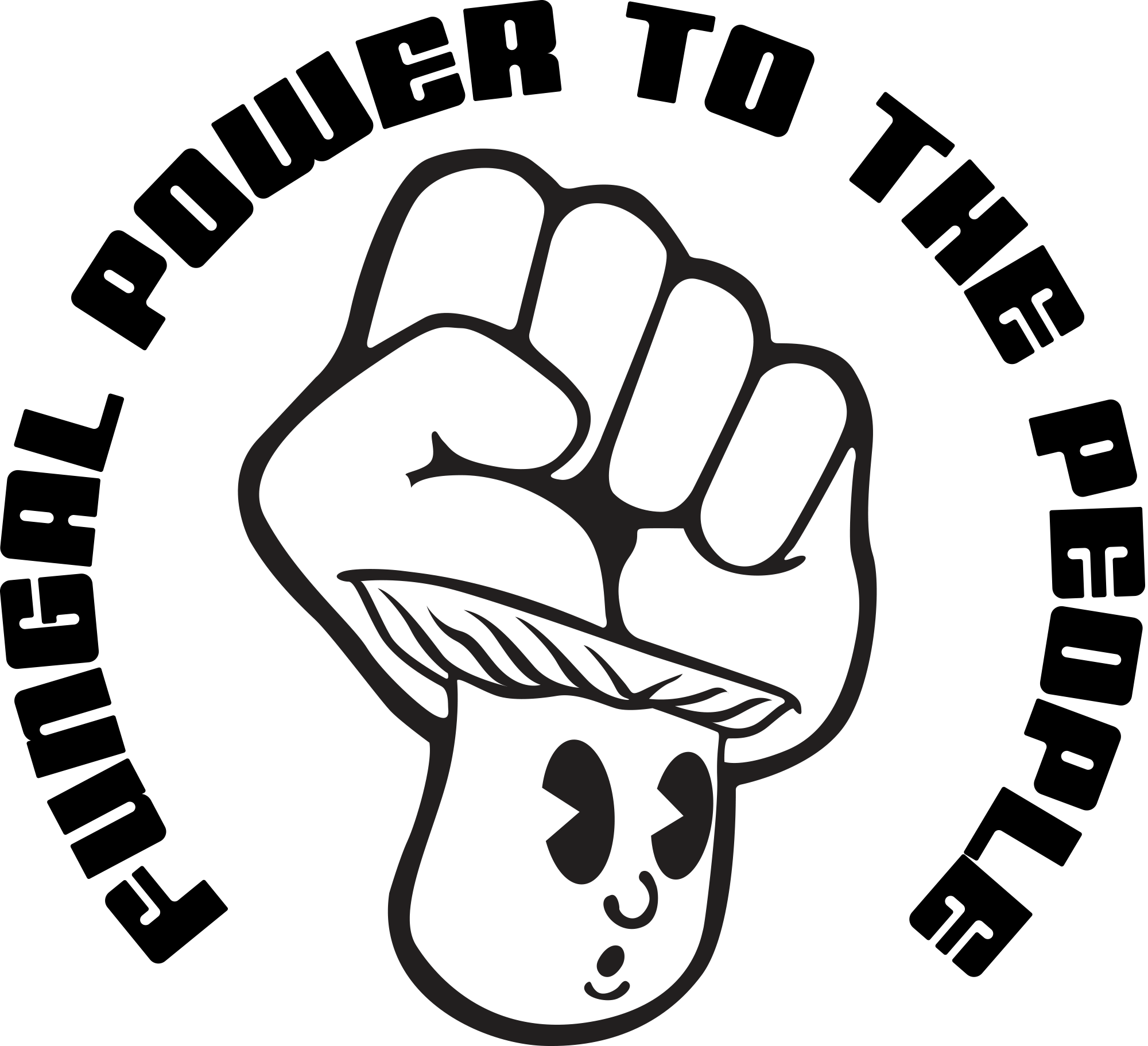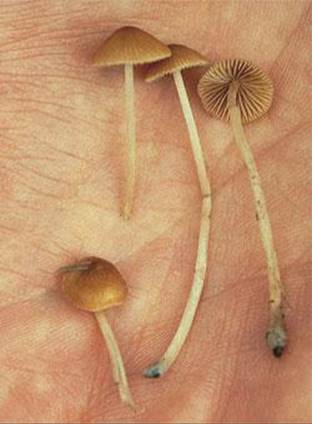INOCYBE AERUGINASCENS
The Inocybe aeruginascens magic mushroom is a rare psilocybin-producing members of the large Inocybe genus. Inocybe aeruginascens is often known as the “Fibrous Head” (from the Greek roots “ino”: fiber) and “cybe”: head).
This genus contains 1400 species that include a mixture of edible, psychoactive and poisonous mushrooms; it has the reputation of being a “mycological minefield” and is therefore advised to would-be psychonauts to refrain from foraging these fungi from the wild.
Even Dr. Daniel Stuntz, who spent several decades studying the genus and estimated 400-600 species, was only able to recognize approximately 150.
This gives a good idea of the difficulty to accurately identify this genus even for the most experienced mycologists and over the span of a lifetime! The best way to be sure is to start from scratch with some propertly identified Inocybe aeruginascens spores.
Members of this genus are known to live in the roots of vascular host plants. This mycorrhizal relationship with the root system of various plants makes the Inocybe aeruginascens magic mushroom amongst the most highly adaptative type of mushrooms.
Inocybe aeruginascens is best known for its exceptionally high levels of aeruginascin, one of the alkaloids present in magic mushrooms. Aerugisnascin is a compound believed to modify the pharmacological action of psilocybin. Some even say aerugisnascin is to psilocybin what CBD is to THC: a compound that is more relaxing than psychoactive.
The Inocybe genus being so large with all the specimens having a repetitive “little brown mushroom (LBM)” morphology, it is very difficult to identify the psilocybin-producing members. Even if the Inocybe aeruginascens spores are clay brown, which may be a discrete hint to its psycho-activity, it is not enough to rely on to safely consume the fungi from the wild.
It was an unfortunate intoxication back in 1983, while mistaking the Inocybe aeruginascens mushroom to the common fairy ring mushroom Marismius oreades, that revealed for the first time the presence of psilocybin in this specie. Its particular smell has been referred to as a displeasing soapy odor, many also describe as musty or spermatid.
The Inocybe aeruginascens mushroom is widely distributed in Europe and other temperate areas and was first documented by I. Ferencz in Ócsa in Hungary in the spring of 1965.
From the latin roots aerug- (“blue-green”) and ascens (“becoming”), Inocybe aeruginascens is the psilocybian mushroom that “becomes blue-green” when bruised. A sign of psilocybin presence.
The exceptional feature of this small mycorrhizal tabacco-coloured fungus is that it contains almost equal amounts of three serotonin-like hallucinogenic compounds: psilocybin, baeocystin, and aeruginascin. Aeruginascin is analog to psilocybin and is also closely related to the frog skin toxin bufotenine (5-HTQ), a potent 5-HT3 receptor agonist.
Jochen Gartz, a German mycologist and chemist, who first discovered and named aeruginascin in the ‘80s, has been closely studying this indole derivative and his studies show that it modifies the pharmacological action of psilocybin. This aeruginascin entourage effect unique to the Inocybe aeruginascens magic mushroom seems to be responsible in fostering a persistent “good trip” experience.
Studies report that consumers (even accidental ingestions), have never had a “bad trip” after ingesting the species, hinting that perhaps Inocybe aeruginescens could be a better option for therapeutic use than psilocybin is. Perhaps this is one of the reasons the Inocybe aeruginascens spores are sought after.
Gartz says that this aeruginascin packed mushroom, because of its chemical structure, is unlikely to cross the blood-brain barrier, perhaps limiting risks for psychotic episodes and offering an overall smoother experience to help treat conditions such as cluster headaches, depression, and other health disorders.
For all these reasons, Gartz believes that the Inocybe aeruginascens mushroom effect is a better choice for psilocybin-assisted therapy. Gartz seems to think that a “feel good always” magic mushroom strain is better for treating patients. One can wonder if the “bad trip” is not essential to the mystical experience that seem to leave patients positively changed forever.
If you are curious to learn about more “soft” magic mushroom strains, have a look at our list of best magic mushroom strains for newbie psychonauts.
Visual Description
INOCYBE AERUGINASCENS Potency
Habitat Origin




